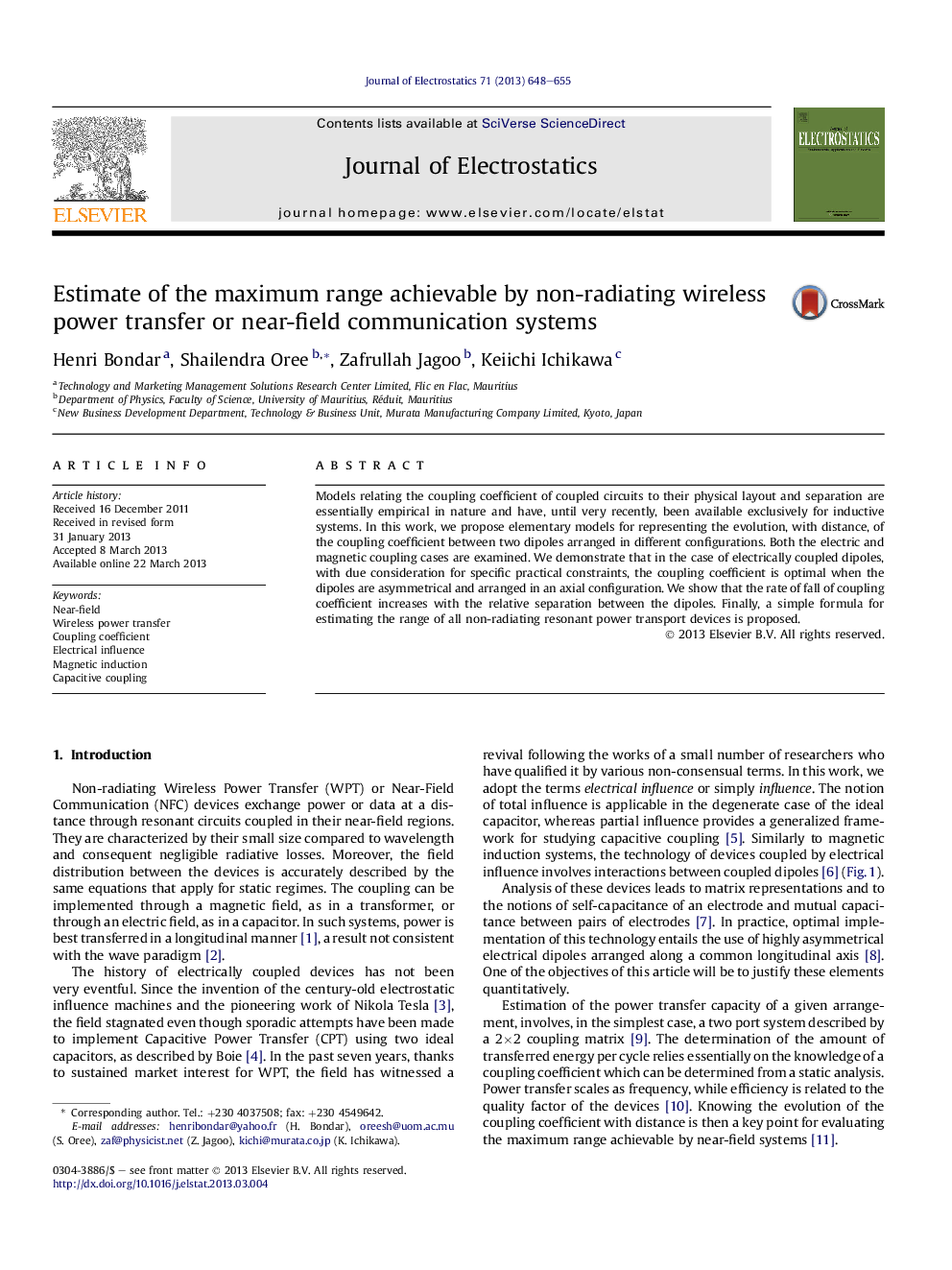| Article ID | Journal | Published Year | Pages | File Type |
|---|---|---|---|---|
| 10406727 | Journal of Electrostatics | 2013 | 8 Pages |
Abstract
Models relating the coupling coefficient of coupled circuits to their physical layout and separation are essentially empirical in nature and have, until very recently, been available exclusively for inductive systems. In this work, we propose elementary models for representing the evolution, with distance, of the coupling coefficient between two dipoles arranged in different configurations. Both the electric and magnetic coupling cases are examined. We demonstrate that in the case of electrically coupled dipoles, with due consideration for specific practical constraints, the coupling coefficient is optimal when the dipoles are asymmetrical and arranged in an axial configuration. We show that the rate of fall of coupling coefficient increases with the relative separation between the dipoles. Finally, a simple formula for estimating the range of all non-radiating resonant power transport devices is proposed.
Related Topics
Physical Sciences and Engineering
Engineering
Electrical and Electronic Engineering
Authors
Henri Bondar, Shailendra Oree, Zafrullah Jagoo, Keiichi Ichikawa,
